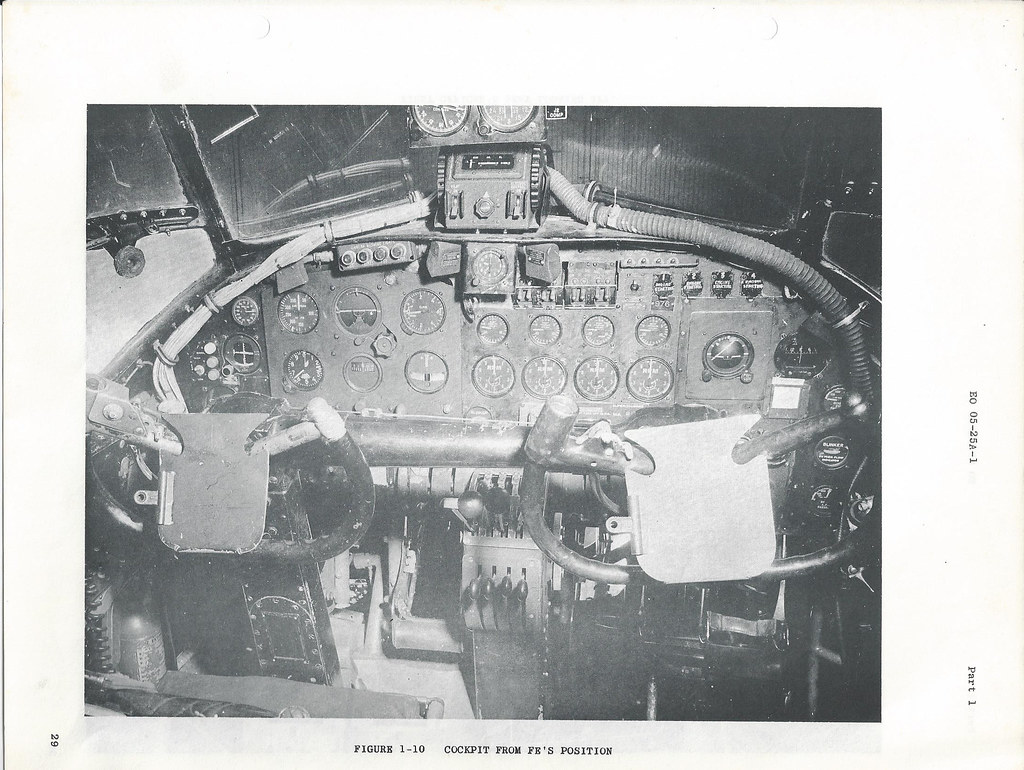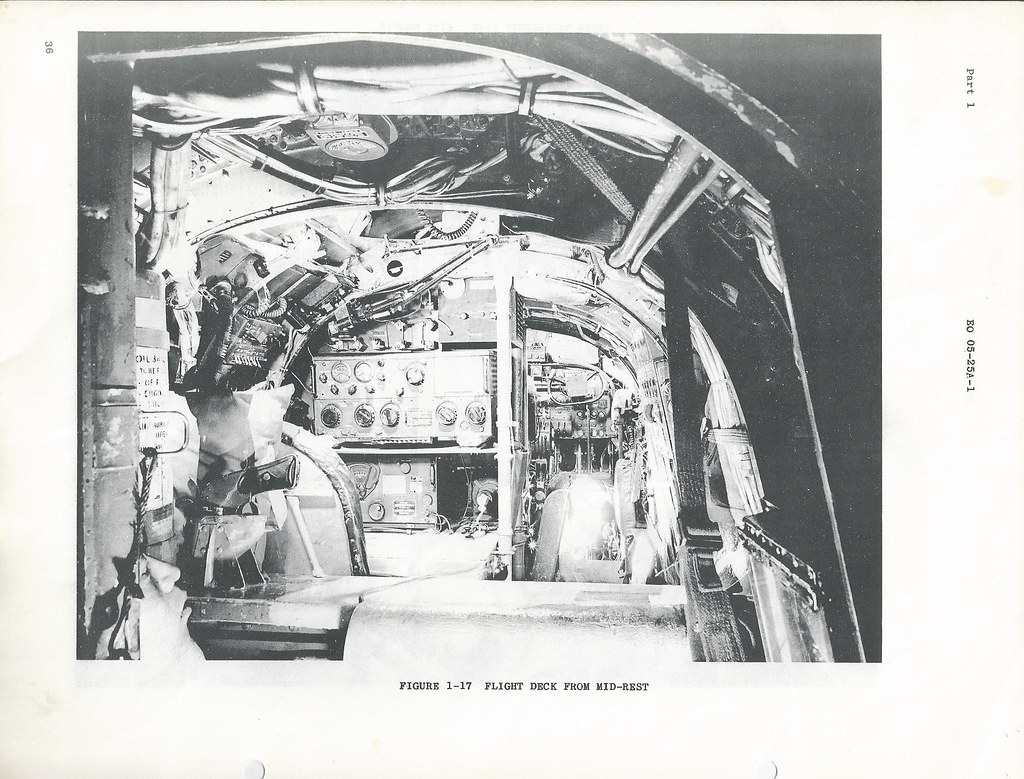| Lancaster
KB976 Section 2 - RCAF Mk 10 Details The main part
of the information on this page was very kindly
provided by Malcolm Martin. A keen modeller in
the fifties and sixties, Malcolm wrote to 408
Squadron RCAF, requesting information to allow
him to construct a model of KB976 as an example
AR Lancaster. The reply resulted in the
information listed in this section.
This consists of parts of the "Note to Users" as well as two examples of the type of photograph mapping that KB976 and it's two sister AR aircraft carried out. Many of the images in the "Note to Users" are of KB976 both inside and out, and give an excellent impression of the inside of the aircraft in the configuration in which she spent the busiest part of her military career. The model has sadly gone missing over the years and all that remains is the photo of the model being held by Malcolm's brother, shown at the bottom of the page. My grateful thanks to Malcolm for providing the information on this section of the website. |
Before Malcolm's information, here is an extract from The Atlantic Canada Aviation Museum Newsletter March 2003, describing the context and background of the AR version. "Mk. 10AR Area Reconnaissance The Mk. 10
AR was the 1952 answer to a need Canada had,
to protect and patrol the far northern regions
of the country. In the early 1950’s, aircraft
flying Arctic patrols were returning to base
with growing evidence of Soviet manned ice
stations built on ice flows in the high
arctic.
The Mk. 10AR Area Reconnaissance (often wrongly called Arctic Reconnaissance) modification was based on the Lancaster Mk. 10P standard airframe, although several major changes were made. The most noticeable change to the airframe was the addition of a forty inch extension to the nose of the aircraft. The extension allowed a navigation / weather radar to be fitted along with a low-level camera system fitted in the former bomb aimer’s perspex. The Mk. 10 AR would be equipped with a total of ten camera systems, a drastic increase when compared to the two systems of the Mk. 10P airframe. Other airframe modifications included: • The addition of two windows in the rear fuselage just forward of the tail (as on the 10MR). • UPD search radar, located in the mid lower fuselage, where the former H2S radar was located. • A wide array of antennas for various radio and passive ECM systems. A normal crew complement of eight (two pilots, two navigators, two radio officers, a flight engineer and camera operator) was often supplemented with additional crew members when electronic surveillance sorties were carried out. A typical sortie would last ten hours. An operational deployment away from the home base at Rockcliff would last on average ten days. The aircraft deployed to forward locations such as: Churchill, Manitoba; Thule, Greenland or any one of a number airfields in the Canadian Arctic. In May 1958, a Lancaster 10AR photographed a Tupolev TU-16 “Badger” bomber being repaired on ice island North Pole Six. Only three airframes were modified to 10AR configuration, they were: KB839, KB882 and KB976. KB 839 and KB 882 both saw combat during the last months of the World War II. 408 Squadron operated the three aircraft until they were finally retired from RCAF service in 1964. All three airframes have escaped the scrapper’s torch. KB839 currently resides in Nova Scotia as part of the Greenwood Aviation Museum. KB882 is on display at the small airport, along side the Trans-Canada Highway at St. Jacques, New Brunswick. KB976 made history as being the last Lancaster to fly the Atlantic in the mid 1970’s on a delivery flight for the Stathallen Collection. It has since been purchased by Kermit Weeks and shipped back to North America." |
| Extracts from RCAF "Note to Users" for the Mk10 AR Lancaster |
 |

|

|

|

|
| 6 |

|

|

|

|

|

|

|

|

|

|

|

|

|

|

|

|

|

|

|

|

|

|

|

|

|
| Malcolm's
brother, John Martin, holding the model of KB976
that all of the above RCAF notes helped create. |